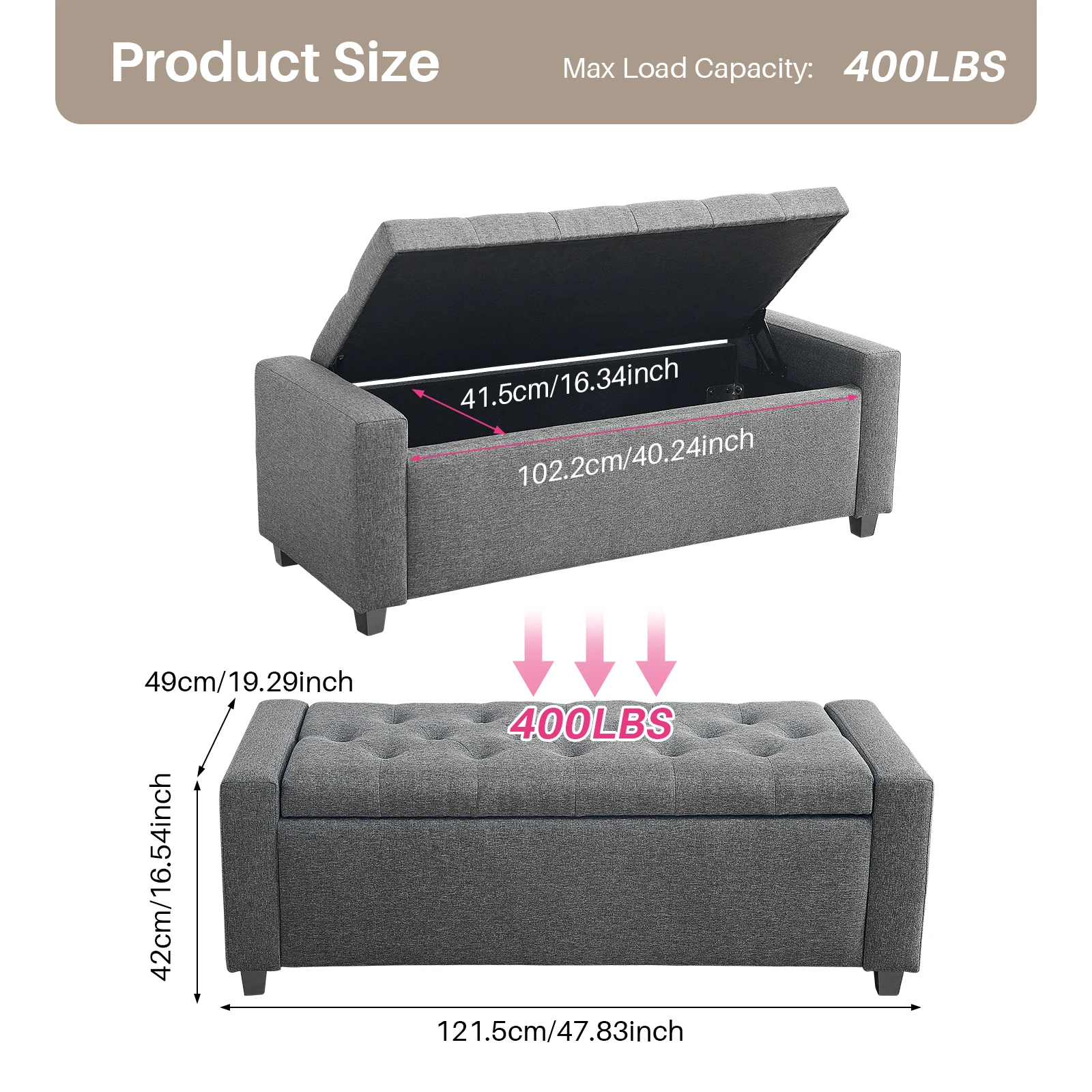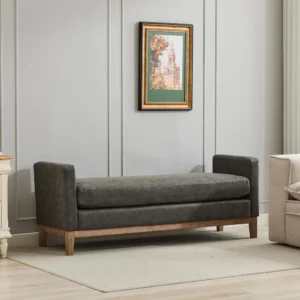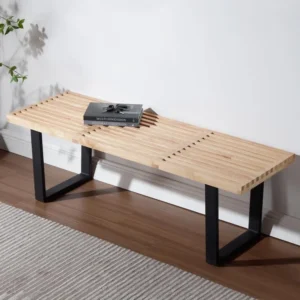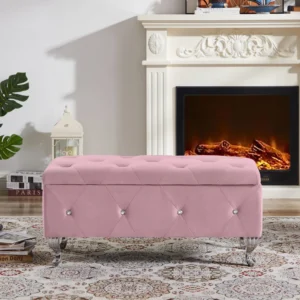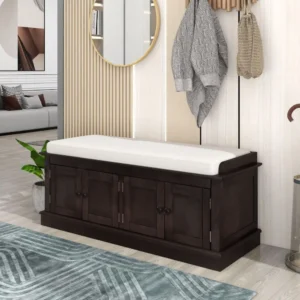1. The Essential Role of Benches in Modern Entryways
The entryway of your home creates that crucial first impression for guests while serving as your daily transition between the outside world and your private sanctuary. At the heart of a well-designed entryway sits the sleek bench—a furniture piece that perfectly balances form and function in modern home design.
What makes a bench truly “sleek” in contemporary design? It’s all about clean lines, minimal ornamentation, and refined silhouettes. These benches eschew unnecessary details in favor of purposeful simplicity, creating a sense of visual calm that defines modern aesthetics. Unlike the ornate entryway furniture of past decades, today’s sleek benches make a statement through thoughtful restraint rather than elaborate decoration.
The evolution of entryway furniture has shifted dramatically, transforming from purely utilitarian pieces to design statements that set the tone for your entire home. Consider that the entryway is both the first and last space people experience in your home—making it worthy of careful consideration. A well-chosen bench serves as an anchor point that ties the space together while providing essential functionality.
Modern entryway benches serve multiple crucial purposes:
- Offering a convenient seat for putting on or removing shoes
- Providing storage for seasonal accessories and everyday items
- Creating a visual focal point that establishes your home’s design language
- Maximizing functionality in what is often a limited space
- Defining the boundary between outside and inside spaces
Understanding different bench styles for space-constrained environments helps you make more informed decisions when selecting the perfect piece. Whether your priority is seating, storage, or pure aesthetics, the right bench can transform your entryway from a mere passageway into a thoughtfully designed introduction to your home.
The selection of modern entryway bench styles has expanded dramatically in recent years, offering solutions that complement various architectural styles while maintaining that coveted sleek appearance. Let’s explore the different aspects that make these pieces both beautiful and functional additions to contemporary homes.
2. Top Styles of Sleek Modern Entryway Benches
Minimalist Benches
The essence of minimalist bench design lies in its disciplined simplicity. These pieces feature straight, clean lines with virtually no ornamentation, allowing the form itself to make the statement. Look for floating designs that create visual space underneath, razor-thin profiles, and monochromatic color schemes. Materials like powder-coated steel and engineered wood with seamless finishes dominate this category. The beauty of minimalist benches is their chameleon-like ability to complement almost any interior style while maintaining their distinctive modern edge.
Mid-Century Modern Influences
Drawing inspiration from the 1950s and 60s, mid-century modern benches bring warmth and organic character to contemporary entryways. Signature elements include tapered legs that angle outward, organic curves that soften geometric frames, and warm wood tones like walnut and teak. These benches often feature distinct joinery details that showcase craftsmanship without unnecessary embellishment. The timeless appeal of mid-century design means these pieces feel both nostalgic and thoroughly current—perfect for creating an entryway with lasting appeal.
Contemporary Upholstered Options
For those seeking to soften the sometimes stark appearance of modern design, contemporary upholstered benches offer the perfect solution. These pieces maintain sleek profiles while introducing textural interest through refined textiles. Look for channel tufting, precision piping, and tailored details that reference high-end furniture design. Materials range from performance velvet and bouclé to sophisticated faux leather options that withstand entryway traffic. These benches create an immediate sense of comfort without sacrificing modern sensibilities.
Industrial-Modern Hybrids
Industrial-modern benches marry raw materials with refined execution, creating pieces with visual weight and character. These benches typically combine blackened steel frames with wood elements, often featuring visible hardware as deliberate design details rather than aspects to conceal. Look for architectural influences, substantial proportions, and materials that develop character over time. These pieces bring an urban sophistication to entryways while maintaining the clean lines essential to sleek modern design.
Scandinavian-Inspired Designs
Scandinavian bench designs emphasize light woods, functional simplicity, and subtle organic curves. These pieces prioritize both beauty and utility—a hallmark of Nordic design philosophy. Look for pale ash or oak construction, woven elements like paper cord seating, and an overall lightness of form. These benches create an airy, natural feeling in the entryway while maintaining a distinctly modern appearance. Their unpretentious simplicity makes them especially compatible with minimalist interiors.
Many designers incorporate minimal benches for contemporary spaces in their projects, recognizing how these versatile pieces can anchor an entryway without overwhelming it. The right style choice depends on your existing architecture, color palette, and the specific functional requirements of your space.
For those seeking additional comfort in their entryway seating, exploring upholstered bench options provides solutions that balance sleekness with tactile warmth. The upholstery material itself becomes an opportunity to introduce color and texture while maintaining clean overall lines.
3. Material Selection for Durability and Style
The materials used in modern entryway benches significantly impact both their visual appeal and longevity. In high-traffic entryways, durability becomes particularly important, making material selection a crucial consideration.
Wood Options
Solid Hardwoods: Walnut offers rich, chocolate tones and exceptional durability, while white oak provides distinctive grain patterns and excellent stability. Ash brings light tones with interesting texture, and maple delivers exceptional hardness with subtle grain.
Engineered Woods: High-quality veneers over engineered cores provide dimensional stability and resistance to warping. Modern manufacturing techniques create finishes that maintain crisp edges while resisting damage.
Maintenance Factors: Different wood species and finishes require varying levels of care. Catalyzed lacquers offer excellent protection but may show scratches, while oil finishes develop character but need occasional refreshing.
Metal Elements
Steel Applications: Powder-coated steel frames provide structural integrity with endless color options. Blackened steel offers industrial character with a sophisticated edge, while brushed steel brings a more subtle contemporary feel.
Brass Accents: Unlacquered brass elements develop a living patina over time, while sealed brass maintains its golden appearance. Even small brass details like feet or hardware can elevate the design of an entryway bench.
Aluminum Benefits: Lightweight yet strong, aluminum components allow for slender profiles without compromising structural integrity. Anodized finishes resist scratching and provide consistent coloration.
Upholstery Considerations
Performance fabrics have revolutionized upholstered entryway furniture, offering stain resistance, durability, and easy cleaning without sacrificing visual appeal or comfort. Solution-dyed acrylics resist fading, while microfiber options provide softness with exceptional durability. Innovations in faux leather now deliver convincing alternatives to genuine leather with superior performance characteristics.
Innovative Materials
Forward-thinking designs incorporate materials like architectural concrete, terrazzo, recycled plastic composites, and engineered stone surfaces. These materials bring distinctive visual characteristics while offering exceptional durability in high-traffic areas.
The most successful modern benches often combine materials thoughtfully—contrasting warm wood with cool metal or juxtaposing soft textiles against hard surfaces. These combinations create visual interest while allowing each material to highlight the others’ best qualities.
For those prioritizing natural materials, wooden bench options provide timeless appeal while complementing various interior styles. The specific wood species and finish can dramatically change the visual impact, from light Scandinavian-inspired pieces to rich, darker tones for more dramatic spaces.
4. Smart Storage Solutions That Maintain Sleek Appearances
The true genius of modern entryway bench design lies in creating storage solutions that remain invisible or intentionally minimal. These thoughtful features address practical needs without compromising the clean aesthetic that defines sleek furniture.
Hidden Compartments
Modern bench designs often incorporate lift-top seating surfaces that reveal generous storage space beneath. These compartments disappear completely when closed, maintaining uninterrupted lines while providing space for seasonal items, extra accessories, or rarely-used belongings. Look for quality hinges with soft-close mechanisms that prevent slamming and enhance the user experience.
Minimalist Drawer Solutions
Some of the most sophisticated bench designs integrate drawers with nearly invisible fronts—achieved through precision cuts, push-open mechanisms that eliminate hardware, or recessed pulls that maintain clean profiles. These drawers provide organized storage for smaller items like keys, gloves, and other essentials that would otherwise create clutter.
Open Shelf Configurations
Carefully considered open storage turns necessity into visual opportunity. Slatted shelves allow air circulation for damp shoes while creating visual rhythm. Precise geometric compartments transform organization into an architectural feature. These open solutions encourage maintaining order since items remain visible.
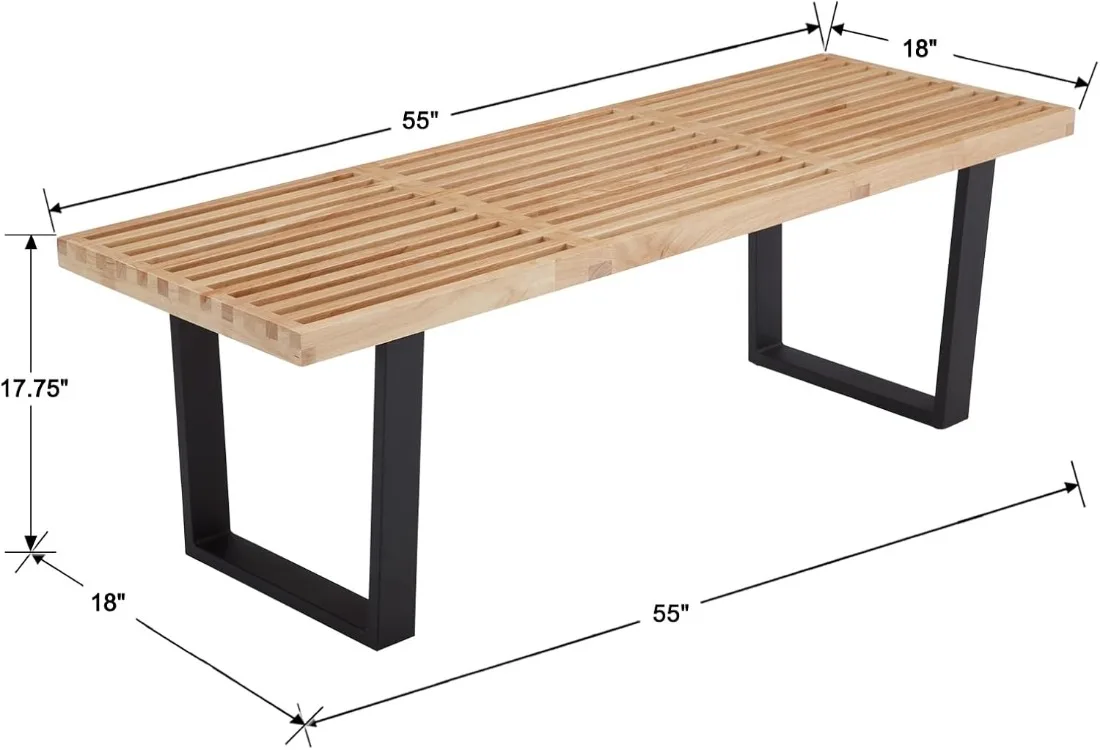
Innovative Shoe Storage
Specialized shoe storage solutions include angled shelves that display footwear while minimizing floor space, pull-out compartments that conceal shoes entirely, and modular components that adapt to seasonal needs. These features address one of the entryway’s primary storage challenges without creating visual clutter.
Multi-Functional Elements
The most innovative bench designs incorporate multiple solutions within a single piece—combining seating, storage, and sometimes even coat storage or mirror placement in unified designs. These multi-functional pieces are particularly valuable in smaller homes where every square inch matters.
For compact spaces, storage benches designed for small spaces offer tailored solutions that maximize functionality without overwhelming limited square footage. The right storage bench can transform an entryway from a chaotic drop zone into an organized transition space that sets a calm tone for the entire home.
5. Space Considerations: Selecting the Perfect Size and Proportion
Choosing a bench with appropriate dimensions for your entryway requires careful measurement and consideration of how the space functions in daily life. Even the most beautiful bench will fail if it impedes movement or overwhelms the available space.
Begin by measuring your entryway’s width and depth, accounting for door swing patterns and traffic flow. A general rule suggests maintaining at least 36 inches of clearance in pathways for comfortable movement. For most residential entryways, benches between 36 and 60 inches wide provide adequate seating without dominating the space.
Depth considerations are equally important—standard bench depths range from 14 to 18 inches. Deeper benches provide more comfortable seating but require more floor space. In particularly tight entryways, consider wall-mounted floating benches that create usable space underneath, visually expanding the area.
Height consistency creates visual harmony—aim for bench seating heights between 17 and 19 inches for comfortable use. Consider how the bench height relates to other elements in your entryway, such as console tables, mirrors, or wall hooks.
| Entryway Size | Recommended Bench Width | Recommended Bench Depth | Clearance Needed |
|---|---|---|---|
| Small (under 30 sq ft) | 24”-36” | 14”-15” | 30” minimum |
| Medium (30-50 sq ft) | 36”-48” | 15”-16” | 36” minimum |
| Large (over 50 sq ft) | 48”-72” | 16”-18” | 42” minimum |
Visual weight—how heavy or light a piece appears regardless of actual dimensions—plays a crucial role in space perception. Benches with open bases, transparent elements, or lighter finishes often work better in smaller spaces as they don’t visually crowd the area. Conversely, substantial benches with closed bases can help anchor larger entryways that might otherwise feel empty.
For particularly challenging spaces, narrow entryway bench options provide solutions with reduced depth while maintaining functionality. Some designs incorporate angled elements or asymmetrical features that work with architectural peculiarities rather than against them.
Those working with limited square footage may find valuable ideas in resources about minimalist benches for small entryways, which specifically address the challenges of creating impact in compact spaces.
6. Styling Your Sleek Bench: Creating a Cohesive Entryway
The bench itself provides only the foundation for your entryway design. Thoughtful styling transforms this functional piece into part of a cohesive design statement that welcomes visitors and residents alike.
Complementary Elements
Pairing your bench with carefully selected complementary pieces creates a complete entryway composition. Consider hanging a statement mirror approximately 6-8 inches above your bench, creating both functional reflection and visual expansion of the space. Wall sconces or a pendant light positioned to illuminate the seating area adds both practicality and ambiance. Textural wall treatments like slat walls, panel molding, or even thoughtfully chosen wallpaper can create a backdrop that highlights your bench’s clean lines.
Textile Additions
Introduce softness through intentionally selected textiles that enhance comfort without overwhelming the sleek aesthetic. A slim bench cushion in a complementary tone adds comfort for seating. Small-scale pillows—no more than one or two—provide color accent opportunities. Consider a narrow runner rug with minimal pattern to define the space while protecting flooring from outside elements.
Balanced Accessorizing
The key to successful modern entryway styling lies in restraint. Choose a small number of high-impact accessories rather than numerous small items. A single sculptural vessel, a minimal tray for corralling small items, or an architectural plant creates interest without creating clutter. Allow for some empty space—this negative area highlights your selected pieces while maintaining the clean feeling essential to modern design.
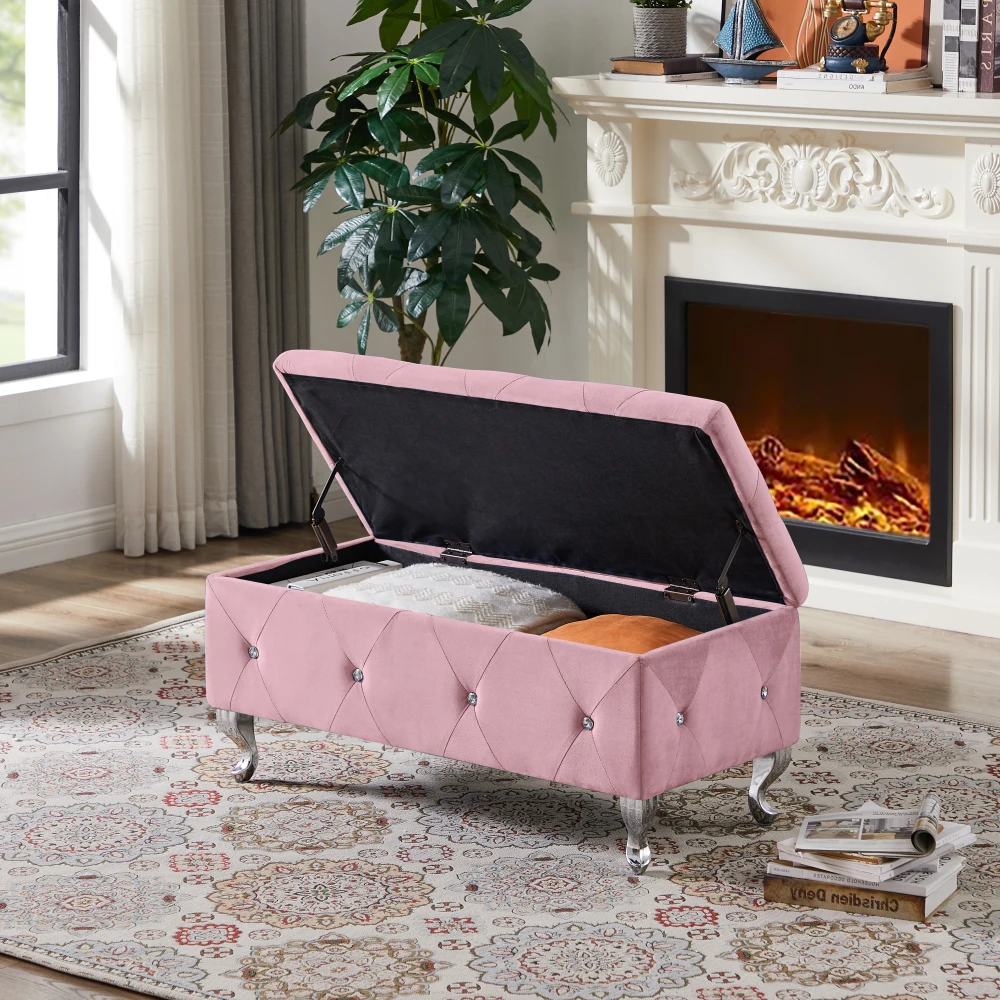
Seasonal Adaptations
Create a framework for easy seasonal adjustments without compromising your modern aesthetic. Consider a rotating selection of minimalist artwork that can change with the seasons. Choose textiles in neutral bases that can be accented with seasonal colors through small accessories. Incorporate natural elements that reflect the time of year—branches in spring, dried elements in fall—while maintaining clean, architectural shapes.
The bench should visually connect to adjacent spaces through thoughtful color coordination and material references. Pull one material or color from nearby rooms into your entryway styling to create coherence between spaces. Consider how the bench appears from different viewpoints throughout your home, ensuring it presents a composed image from multiple angles.
For additional inspiration on creating styled moments around your entryway bench, exploring modern entry bench decor ideas can provide specific techniques that maintain clean aesthetics while adding personality to the space.
7. How to Choose the Right Sleek Bench for Your Modern Entryway
Selecting the perfect bench requires methodical consideration of both practical needs and aesthetic preferences. This step-by-step approach helps navigate the many available options.
Assess Your Specific Needs
Begin by clearly identifying the primary functions your entryway bench must serve. Ask yourself:
– Is seating the main priority for shoe removal?
– Do you need significant storage for seasonal items?
– Will the bench serve as a landing spot for bags and packages?
– Does the space require visual lightening or anchoring?
For households with children, consider benches with rounded corners and durable, cleanable surfaces. Pet owners might prioritize materials resistant to claws and easy-to-clean options. Single-person households might emphasize aesthetics over maximum storage capacity.
Architectural Harmony
Your bench should complement your home’s existing architectural elements:
– In spaces with minimal molding and clean lines, choose benches with similar restraint
– With distinctive architectural features, select benches that echo those characteristics without competing
– Consider ceiling height—lower ceilings pair better with lower-profile benches
– Respect existing material palettes by choosing complementary tones
Budget Considerations
Quality benches exist across various price points, but understanding where to invest makes a difference:
– Frame construction significantly impacts longevity—invest here for long-term use
– Hardware quality affects daily functionality—look for soft-close mechanisms and smooth operation
– Consider material authenticity—solid wood costs more than engineered wood but offers different aesthetic and durability properties
Avoid sacrificing quality for size—a smaller, well-made bench typically offers better long-term value than a larger, poorly constructed alternative. Consider the bench as an investment piece that will define your entryway for years to come.
For those working with limited space, exploring small entryway bench options provides solutions specifically scaled for compact areas without sacrificing style or essential functionality.
8. Are Customized Sleek Benches Worth the Investment?
When Does Custom Make Sense?
Custom benches become particularly valuable for challenging architectural situations—unusually shaped entryways, non-standard dimensions, or spaces with obstructions like radiators or built-in elements. They also make sense when you have specific material combinations in mind that aren’t available in ready-made options, or when you want a truly unique piece that perfectly expresses your design vision.
Value Considerations
While custom pieces typically cost 30-50% more than comparable ready-made options, they provide specific benefits that may justify the investment:
- Perfect dimensional fit for your space without compromises
- Material selections that exactly match your interior palette
- Construction details tailored to your specific needs
- The intangible value of a one-of-a-kind piece
The Custom Process
Working with a custom furniture maker typically involves:
- Initial consultation and measurements
- Material and design concept discussions
- Drawings or renderings for approval
- Construction timeframe of 6-12 weeks
- Installation and adjustments as needed
When Ready-Made Works
High-quality ready-made options often suffice when:
- Your entryway has standard dimensions
- You find a piece that meets your functional requirements
- The available design aligns with your aesthetic vision
- Your timeline doesn’t allow for custom creation
For those with challenging corner spaces, corner benches designed for modern homes offer specialized solutions that maximize awkward areas while maintaining sleek appearances.
9. Can Sleek Benches Work in Traditional Homes?
The juxtaposition of sleek, modern benches in traditionally styled homes creates an intriguing design tension that can refresh classic interiors without undermining their essential character. This approach, often called “transitional design,” bridges different eras through thoughtful selection and placement.
In homes with traditional architectural elements like crown molding, wainscoting, or ornate details, a sleek bench provides contemporary counterpoint that prevents the space from feeling dated. The key lies in finding common elements—perhaps a wood tone that references other pieces in your home, or a metal finish that complements existing hardware.
Transitional bench designs incorporate subtle references to traditional furniture through details like gentle edge profiles, familiar proportions, or classically inspired joinery methods—while maintaining the clean lines essential to modern design. These pieces serve as a bridge between different design eras.
When introducing a sleek bench into a traditional setting, consider these integration strategies:
– Choose materials with warmth and texture to soften the modern edge
– Select pieces with at least one classical reference (tapered legs, familiar proportions)
– Use styling elements that tie the bench to existing traditional elements
– Consider upholstered options with subtle patterns that reference traditional textiles
The successful integration of different design eras creates spaces with greater depth and character than those confined to a single style period. This layered approach reflects a home that has evolved naturally over time rather than being created in a single moment.
Entryway Bench with Cushion, Mudroom Bench with Cushion, Shoe Bench for Entryway
$1,186.63 Select options This product has multiple variants. The options may be chosen on the product pageEntryway Bench with Back, Modern Entryway Bench, Shoe Bench for Entryway
Price range: $463.13 through $474.44 Select options This product has multiple variants. The options may be chosen on the product pageCorner Entryway Bench, Entryway Bench with Cushion, Modern Entryway Bench, Shoe Bench for Entryway
$476.34 Select options This product has multiple variants. The options may be chosen on the product pageModern Entryway Bench, Wood Entryway Bench, Wood Mudroom Bench
$497.69 Select options This product has multiple variants. The options may be chosen on the product pageEntryway Bench with Cushion, Small Entryway Bench
$466.79 Select options This product has multiple variants. The options may be chosen on the product pageEntryway Bench with Cushion, Mudroom Bench with Cabinets, Shoe Bench for Entryway, Shoe Bench with Cushion
$991.71 Select options This product has multiple variants. The options may be chosen on the product page
10. Why Entryway Organization Starts with the Right Bench
A thoughtfully designed entryway bench establishes organizational systems that influence behavior throughout the entire home. By providing dedicated space for everyday items, the bench creates natural habits that maintain order without constant effort.
The psychological benefits of an organized entryway extend beyond simple tidiness. Entering a well-ordered space reduces stress by eliminating the visual chaos that can overwhelm the senses after a busy day. Similarly, leaving from an organized entryway starts your day with a sense of control and preparation. This transitional space serves as both a physical and mental boundary between outside demands and your private sanctuary.
Modern design principles—with their emphasis on “form follows function”—naturally support organization through purposeful design rather than decorative afterthoughts. Sleek benches exemplify this approach by integrating storage solutions within their clean aesthetic rather than adding them as obvious attachments.
Maintaining entryway organization requires systems that adapt to seasonal changes and evolving household needs. The most successful entryway benches incorporate flexibility in their design, allowing for adjustment without compromising their visual appeal. This might include modular elements, adjustable compartments, or multi-purpose features that serve different functions as needed.
For those seeking to create truly efficient entryways, staying informed about modern entryway furniture trends provides insights into evolving solutions that balance aesthetics with practical organizational needs.
11. Five Inspirational Sleek Bench Styling Ideas to Try
1. Minimalist Monochrome
Create visual impact through a disciplined approach to color and form. Select a bench in a neutral tone that closely matches your wall color, creating a seamless, architectural appearance. Add a single oversized mirror with a slim frame in the same tone. Complete the look with one sculptural element in a contrasting material—perhaps a matte black metal coat hook or a limestone vessel. This approach creates sophistication through restraint, allowing the forms themselves to create visual interest.
2. Textural Neutral Palette
Build visual richness while maintaining a sleek appearance through careful layering of textures within a tight color palette. Begin with a clean-lined wooden bench with visible grain. Add a natural fiber runner rug with subtle pattern. Incorporate a tactile cushion in bouclé or woven wool. Complete the composition with a rough ceramic vessel holding architectural branches. This approach creates warmth without busyness, engaging the senses while maintaining visual calm.
3. Artistic Statement
Center your entryway design around the dialogue between your sleek bench and a single piece of statement artwork. Choose a bench with simple lines that won’t compete visually. Position bold, contemporary artwork above—perhaps an oversized photograph or abstract painting with strong graphic elements. Keep all other elements minimal and supporting. This approach creates a gallery-like entrance that makes a memorable impression.
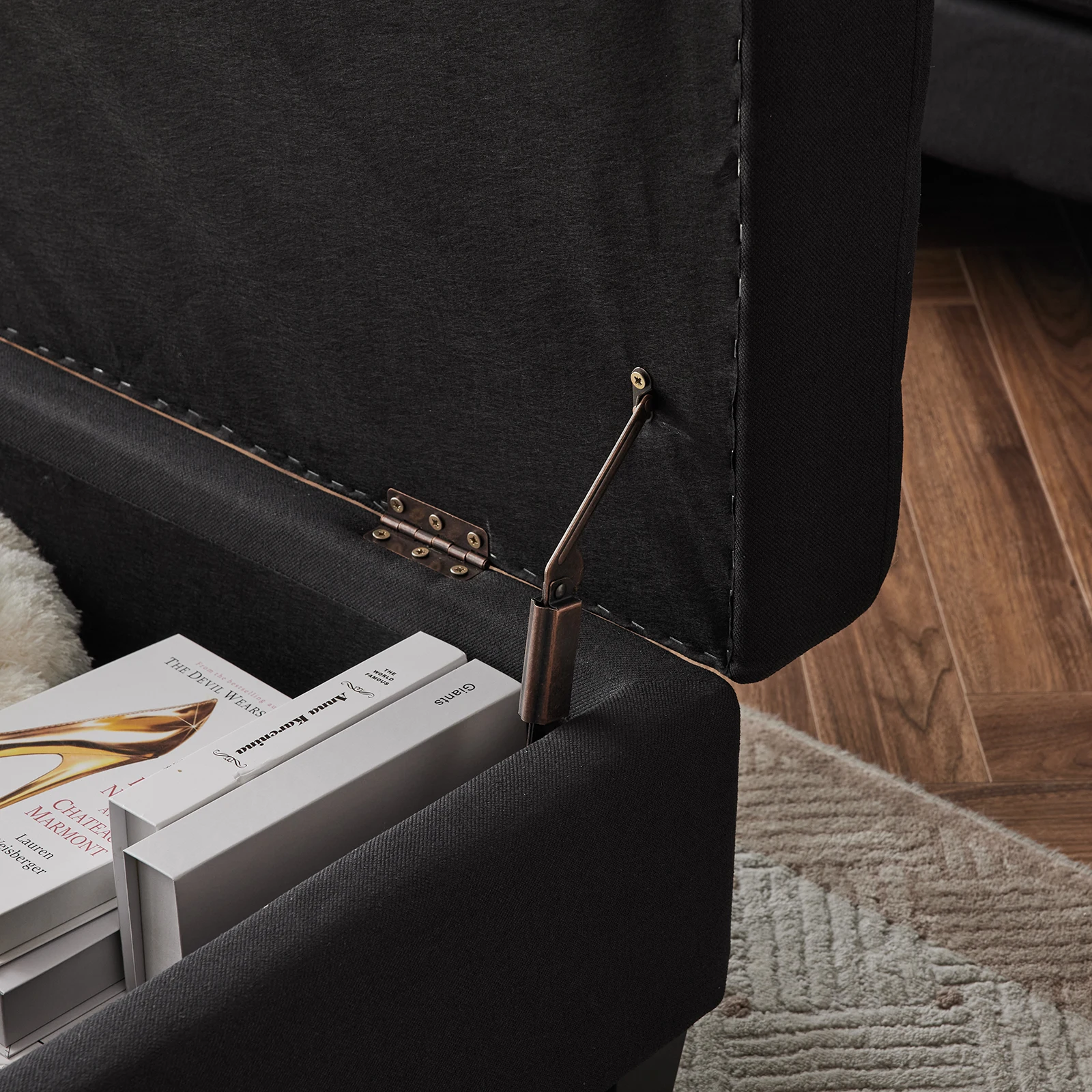
4. Biophilic Integration
Connect your entryway to nature through thoughtful plant selection and natural materials. Choose a bench with organic elements like wood or stone. Position architectural plants nearby—consider sculptural varieties like snake plants or fiddle leaf figs in simple planters. Add natural light through sheer window treatments if possible. This approach creates a sense of wellness and connection to the natural world while maintaining modern aesthetics.
5. Dramatic Lighting Focus
Transform your entryway through strategic lighting that highlights your bench as a focal point. Position directional ceiling lights to create a subtle spotlight effect on the bench. Add a table lamp with architectural presence on a nearby surface. Consider LED strips beneath floating benches for a contemporary glow. This approach creates atmosphere while emphasizing the sculptural qualities of your sleek bench.
For those working with limited square footage, styling tips for small modern entryways offer specialized approaches that create impact without overwhelming compact spaces.
12. What Makes the Difference Between Budget and Premium Sleek Benches?
Understanding the distinguishing factors between different price points helps make informed investment decisions when selecting an entryway bench. These differences extend beyond simple aesthetics to impact longevity and functionality.
Quality Indicators
Premium benches typically feature solid wood construction rather than veneered particleboard, with traditional joinery methods like dovetails or mortise-and-tenon connections rather than simple mechanical fasteners. They incorporate high-grade hardware—soft-close mechanisms, precision hinges, and smooth-gliding drawer systems that maintain their functionality over years of use. Even seemingly minor details like the weight of the piece often indicate quality—substantial heft usually suggests solid construction materials.
Design Nuances
Higher-end benches demonstrate sophisticated proportional relationships, with thoughtfully considered dimensions that reflect human ergonomics rather than manufacturing convenience. They often feature resolved details like edge profiles that appear consistent from all viewing angles and seamless transitions between different materials. Many incorporate subtle customization elements like adjustable components or modular arrangements that adapt to changing needs.
Value Perspective
Rather than focusing solely on initial price, consider cost-per-use over the lifespan of the piece. A well-constructed bench might cost twice as much as a budget alternative but last four times longer while maintaining its appearance. Quality pieces often maintain resale value, sometimes even appreciating if from recognized designers or manufacturers. However, strategic investment in mid-range pieces with quality construction basics and simpler detailing often provides excellent value for most households.
13. How Do You Maintain a Sleek Bench’s Appearance Over Time?
Preserving the clean, architectural appearance of your entryway bench requires material-specific maintenance approaches and preventative measures against typical entryway challenges.
Material-Specific Care
- Wood surfaces: Dust regularly with microfiber cloths and treat quarterly with appropriate conditioning products—food-safe mineral oil for raw woods, specialized wood conditioners for finished surfaces.
- Metal elements: Wipe with barely damp cloths to remove fingerprints, and apply appropriate metal-specific products for different finishes—oils for unlacquered brass, gentle cleansers for powder-coated surfaces.
- Upholstery maintenance: Vacuum regularly using upholstery attachments, treat spills immediately according to fabric type, and consider professional cleaning annually for heavily used pieces.
Protective Strategies
Implement preventative measures that preserve appearance without compromising design integrity:
– Use discreet felt pads under items placed on bench surfaces
– Consider clear protective treatments for vulnerable materials in high-traffic areas
– Establish household habits that prevent damage (removing shoes, emptying pockets)
– Position quality entry mats outside to reduce dirt transfer to bench surfaces
Seasonal Refreshing
Quarterly assessment and maintenance keeps benches looking their best:
– Check and tighten any mechanical fasteners that may have loosened
– Touch up minor finish damage before it worsens
– Deep clean areas that accumulate subtle grime over time
– Adjust placement slightly to ensure even wear and exposure
With proper care, a quality entryway bench can maintain its sleek appearance for decades, continuing to make a strong first impression while providing essential functionality.

